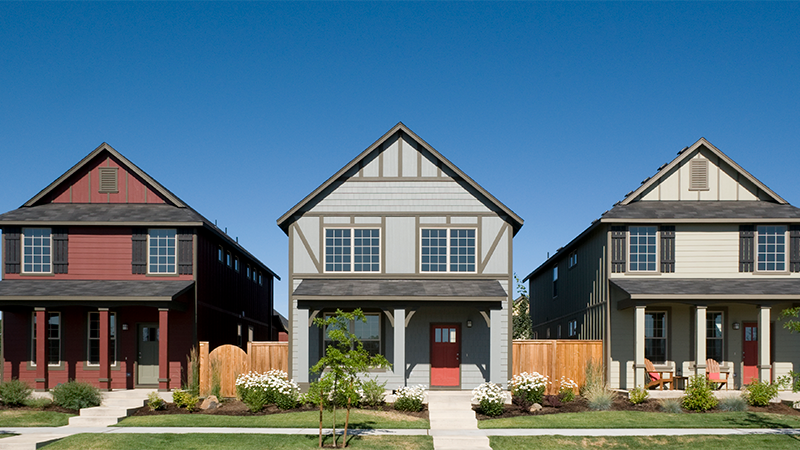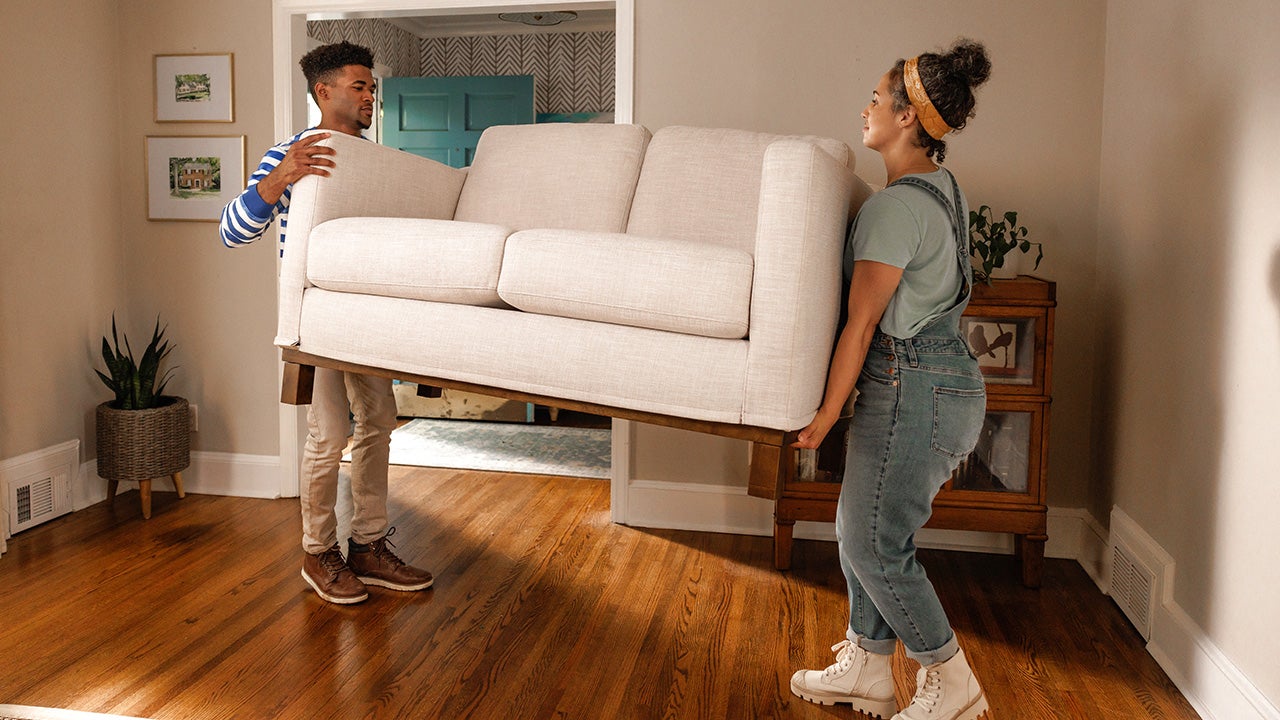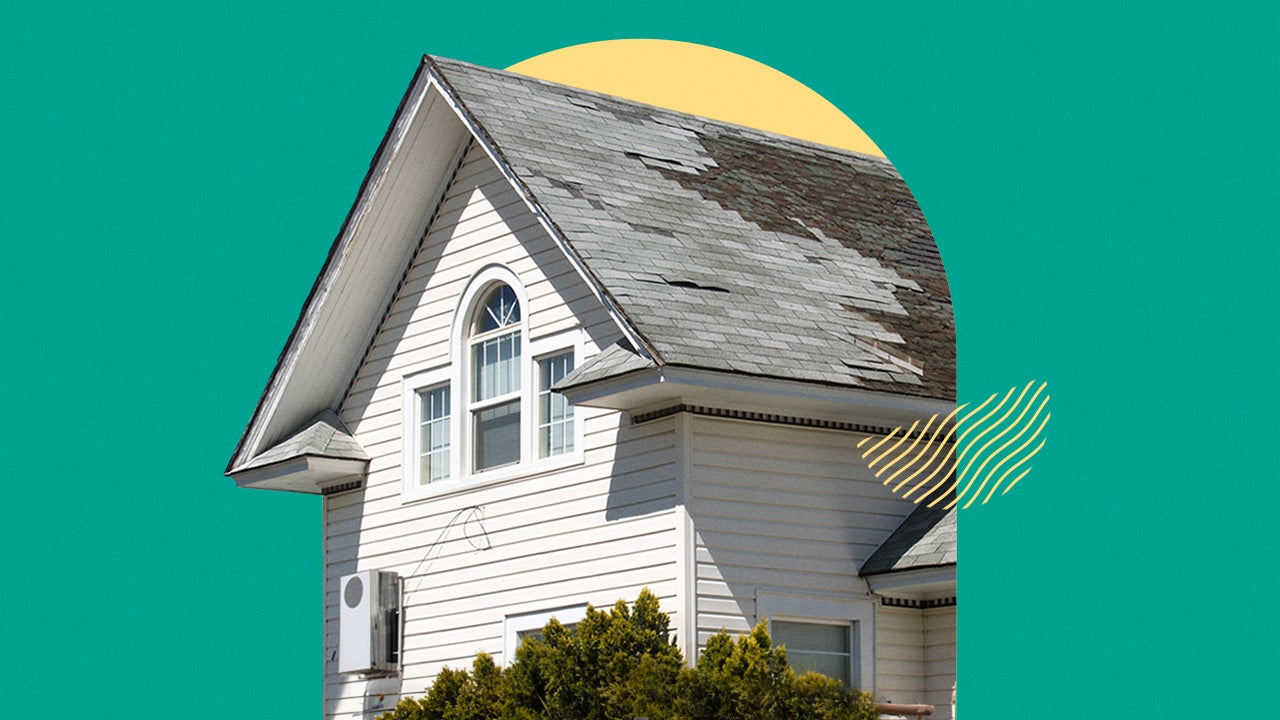Types of homeowners insurance




Key takeaways
- The most common type of homeowners insurance policy is the standard HO-3 policy.
- HO-5 policies offer the broadest coverage of all policy types.
- Open peril coverage means losses are covered unless specifically excluded, while named peril coverage means only named loss types are covered.
- There are home insurance types specialized for owned homes, rented homes, mobile homes, historic homes and condos.
Homeowners insurance is not a single policy type; consumers have eight types of home insurance policies to choose from when purchasing coverage. While some policies are tailored to specific types of homeowners or renters, others allow the homeowner to personalize what coverage they want. Before you purchase or renew a policy, ensure you understand all your options. To make it easier, Bankrate’s insurance editorial team explores the features of the different types of home insurance so you can make an informed decision.
HO–1 insurance
An HO-1 is the most basic homeowners insurance policy. It only provides coverage for the structure of your home, attached structures like garages and appliances and home features like carpeting. It does not include coverage for personal property, liability or additional living expenses. Because of those limitations, it is not as popular as more robust policy options.
HO-1 insurance is a named perils policy, meaning it only covers your home in specific loss events, which typically include:
- Damage from aircrafts or vehicles
- Explosions
- Fire and lightning
- Hail and windstorms
- Riots
- Smoke
- Theft
- Vandalism
- Volcanic eruption
With an HO-1 policy, your home, attached structures, appliances and home features will only be protected if they are damaged from one of the perils that is specifically listed in your policy. If they incur damage from anything else, you will need to pay for the repairs out of pocket as any claim filed for uncovered losses would be denied by your home insurer. It is worth noting that an HO-1 policy does not include liability, loss of use coverage or medical payments coverage, which are part of standard home policies. Because coverage is so limited, many insurers do not write this type of policy.
Learn more: HO-1 insurance
HO–2 insurance
An HO-2 insurance policy is also known as a broad form and covers your home and your personal belongings. Most home insurance companies will cover your personal belongings up to a specified level if they are at home, in your car or somewhere else, such as an offsite storage facility. HO-2 policies may include liability coverage in some circumstances. To determine if your HO-2 policy includes liability coverage, contact your insurance carrier directly.
Like an HO-1 policy, HO-2 insurance is a named perils policy that covers your home and your personal items from the losses that are listed out in your policy. Typically, the losses found in an HO-2 policy are similar to the ones in an HO-1, but may include a few additional ones:
- Accidental discharge or overflow of water or steam within the home
- A falling object
- Freezing of pipes and heating and air conditioning systems
- Sudden and accidental damage from certain electrical currents
- Tearing apart, burning, cracking from some household systems
- Weight from ice, snow or sleet
Learn more: HO-2 insurance
HO-3 insurance
The most common type of homeowners insurance is the HO-3 policy — accounting for more than 90 percent of all home policies written in the U.S. — which covers your home, your personal property, liability, additional living expenses and medical payments. Unlike an HO-1 and HO-2 policy, your home and attached structures are protected on an open-peril basis; they are protected from all kinds of losses except the ones that are specifically excluded from your policy.
Personal finance and insurance expert Laura Adams says, “An HO-3 is considered the standard coverage. It gives you ‘open perils’ coverage for your home structure, which protects you from all disasters unless the policy lists exceptions. However, you receive ‘named perils’ coverage for personal possessions, which applies to disasters named in the policy.”
Your home and other structures typically have the following perils excluded:
- Any animals owned by the insured
- Birds, rodents, varmint
- Defective construction or maintenance
- Earth movement
- Flood
- Foundation issues
- Government actions
- Intentional loss
- Mechanical breakdown
- Mold, fungus, wet rot
- Neglect
- Nuclear hazard
- Ordinance or law
- Pet or animal damage
- Pollution and corrosion
- Power failure
- Smog, rust, or corrosion
- Theft, vandalism and frozen pipes in vacant houses
- Wear and tear
- War and insurrection
Although floods and earthquakes are not covered by a standard HO-3 policy, you may be able to get an endorsement or separate flood insurance or earthquake policy to meet these coverage needs.
- Damage from aircrafts or vehicles
- Damage from the weight of snow or ice
- Damages caused by an electrical current
- Explosions
- Falling objects
- Fire and lightning
- Hail and windstorms
- Pipes freezing
- Riots
- Smoke
- Theft
- Vandalism
- Volcanic eruptions
- Water damage from plumbing or HVAC overflow
- Water heater damage
Learn more: HO-3 insurance
HO–4 insurance
An HO-4 policy, also known as renters insurance, is intended for renters who want to insure their personal belongings and get additional coverage, like liability and additional living expenses. An HO-4 is not technically a “homeowners” policy, as renters don’t own the property where they are living, which is why this policy type excludes coverage for the building’s structure whether it is a single-family home or multi-family structure like an apartment building. Renters would need to purchase separate coverage for flood and earthquake damage.
Renters insurance policies are usually named perils policies that cover the following events:
- Damage from aircrafts or vehicles
- Damage from the weight of snow or ice
- Damages caused by an electrical current
- Explosions
- Falling objects
- Fire and lightning
- Hail and windstorms
- Pipes freezing
- Riots
- Smoke
- Theft
- Vandalism
- Volcanic eruptions
- Water damage from plumbing or HVAC overflow
- Water heater damage
Learn more: HO-4 insurance
HO–5 insurance
An HO-5 policy is the most robust option available, covering your home, your personal belongings, liability, additional living expenses and medical payments for others. It typically covers personal possessions at replacement cost value versus actual cash value. These policies may also have higher coverage limits for personal possessions like jewelry compared to the more common HO-3 policy. However, not all home insurers offer HO-5 policies and not all homeowners will be able to purchase an HO-5 policy due to the strict qualification guidelines.
To get an HO-5 policy, your home typically needs to be newer construction, have higher than average replacement cost value, and/or located in a low-risk area for natural disasters.
Adams discusses how an HO-5 policy could be beneficial for individuals with high-value items. She says, “It typically costs more and may not be offered by every insurer, but could be worth it if you have many valuable possessions.”
With an HO-5 policy, your home and your personal items are both covered on an open perils basis. Some common exclusions include:
- Earth movement
- Government actions or laws
- Infestation of birds, rodents or insects
- Intentional loss
- Mechanical breakdown
- Mold
- Nuclear hazard
- Pets
- Vandalism if the property is vacant more than two months
- War and insurrection
- Water damages from floods or sewer backup
Because an HO-5 policy is written on an open perils basis rather than on a named perils basis, it covers more circumstances and can make it easier to get coverage when you file a claim. Because of its higher coverage limits for personal property, an HO-5 policy is usually more expensive than a standard HO-3.
Learn more: HO-5 insurance
HO–6 insurance
HO-6 insurance is specifically for condo owners. These policies exclude the structure of the condo and anything else that would fall under the overarching policy for the condo facilities insurance policy. Instead, the HO-6 covers your belongings, some appliances and devices within the condo, personal liability and additional living expenses. The structure and features are generally covered under a master insurance policy written for the entire collection of condos and the surrounding property of common areas, such as pools, laundry rooms or social rooms. HOA fees are commonly charged to condo owners to help cover these collective, overarching insurance policies.
It is important to have enough coverage in your condo policy to not only pay off your mortgage, but to purchase a similar unit if your building is damaged or destroyed and you need to move elsewhere. For flood and earthquake coverage, separate coverage would need to be purchased.
HO-6 policies are named perils policies that generally cover:
- Damage from aircrafts or vehicles
- Damage from the weight of snow or ice
- Damages caused by an electrical current
- Explosions
- Falling objects
- Fire and lightning
- Hail and windstorms
- Pipes freezing
- Riots
- Smoke
- Theft
- Vandalism
- Volcanic eruptions
- Water damage from plumbing or HVAC overflow
- Water heater damage
Learn more: HO-6 insurance
HO–7 insurance
An HO-7 insurance policy covers mobile or manufactured homes, including trailers, sectional homes, RVs and modular homes. This type of policy provides coverage for your home’s structure, your personal belongings, liability, additional living expenses and medical payments. Flood and earthquake coverage would need to be purchased separately.
The exterior of your home is covered under an open perils policy, which covers any situation that is not explicitly stated in your insurance policy.
However, HO-7 policies cover your personal belongings under a named perils policy. That means your personal items are only covered under a specific list of circumstances, including:
- Damage from aircrafts or vehicles
- Explosions
- Fire and lightning
- Hail and windstorms
- Riots
- Smoke
- Theft
- Vandalism
HO–8 insurance
HO-8 insurance rounds out the eight types of home insurance policies. This type of home insurance is generally considered best for old or historic homes that may have a relatively high rebuild cost because of their age, design or materials. Homes that have been designated as historic landmarks may do well with such a policy, as would older homes that use less common design features and materials. If it would cost more to repair your damaged home than its current value, an HO-8 policy may be a suitable option.
HO-8 policies include the standard coverage for dwelling, personal property, liability, additional living expenses and medical payments. Both your home’s structure and your personal property are covered under a named perils policy. This includes events such as:
- Damage from aircraft or vehicles
- Explosions
- Fire and lightning
- Hail and windstorms
- Riots
- Smoke
- Theft
- Vandalism
- Volcanic eruption
Like a standard home policy, flood and earthquake coverage would need to be purchased separately.
How do I choose the right home insurance policy?
Depending on your living situation, some types of homeowners insurance may be better choices than others. For instance, some policies are geared toward renters, condo owners, mobile homes, landlords or homeowners living in their homes. The first step is going to be identifying which category fits you best.
- If you live in a relatively modern home that you own on a mortgage or otherwise, you may be best with an HO-3, the most common home insurance policy.
- If you live in a rental property, you might consider an HO-4.
- If you live in a mobile home, you may do best with an HO-7.
- If you live in a condo that you own, then you should consider an HO-6.
- If you live in a historic home that you own, you might consider an HO-8.
- If you have a lot of high-value personal items and want the maximum amount of protection possible, an insurer may offer you an HO-5 policy.
- If you’re looking for a standard home insurance policy with slightly less protection and reduced cost, you may want an HO-2.
- If you’re looking for a minimalist policy that only covers the structure of your home, attached building and certain appliances, you may want an HO-1.
Ultimately, the type of policy you choose should meet your needs, provide adequate financial protection, and not cost more than your budget allows.
Frequently asked questions
Why we ask for feedback Your feedback helps us improve our content and services. It takes less than a minute to complete.
Your responses are anonymous and will only be used for improving our website.
You may also like

How to buy homeowners insurance


What does homeowners insurance cover?

Guide to home insurance: coverage basics and definitions
